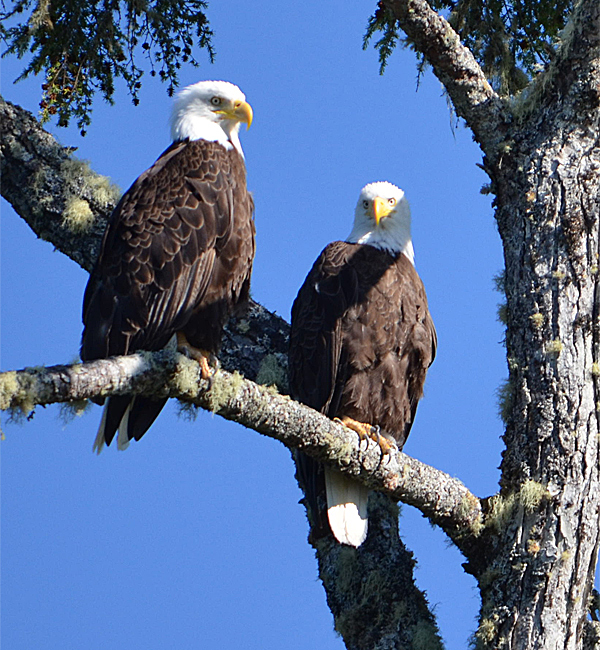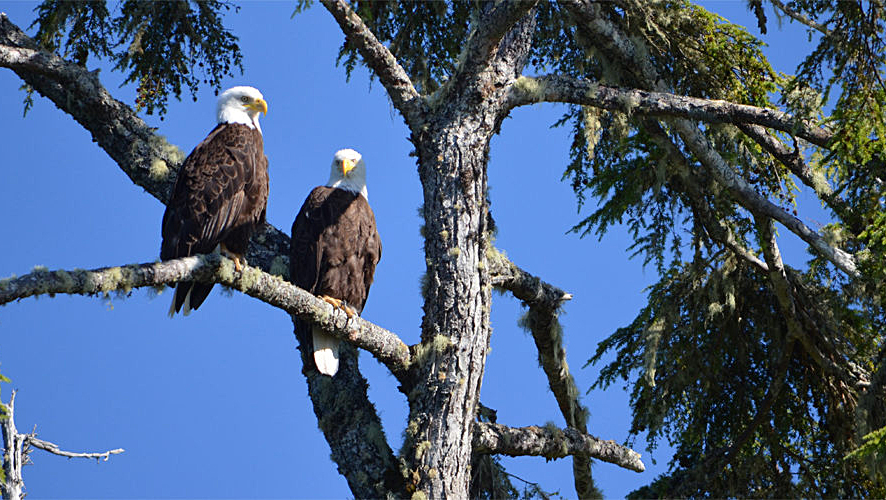Authors: Calen Michel and Isacc Hatfield
Photos by Isaac Hatfield and video by Calen Michel
Scientific name: Haliaeetus leucocephalus
Adult weight: 3 to 6.3kg
Wingspan: 1.8-2.3m
Height: 30-40in
Identifying features: Adults have a white head, neck, and tail and a dark brown body and wings. They have hooked yellow beaks and strong yellow talons that help them catch prey. Immature eagles are chocolate brown with white and black spots, spotty beaks and dark brown to light yellow eyes. Males and females look the same, however, females tend to be bigger with a longer beak and back talon.
Habitat: Bald eagles are most abundant in Alaska and Canada and other northern parts of America. They make their nests in forested areas near large bodies of water and tend to seek areas away from humans. They often return to their nests each year and continue to add new materials, creating nets that can weigh more than 2000 pounds.


Food: Their primary source of food is fish, but they do eat smaller mammals. They are opportunistic predators which means they can steal prey from other animals or scavenge. Bald Eagles are at the top of their food chain, meaning they do not have any predators, however, they do experience negative effects from human activity.
Life Cycle: They are monogamous birds and the female usually lays one to four eggs, incubating them for 30 to 50 days depending on the climate. Once the eggs have hatched, the eaglets stay in the nest for 10 to 23 weeks while the parents feed them. Once the eaglets learn to fly and hunt, they leave their nest and start their own family. Bald Eagles have a lifespan of 20 years in the wild.

References:
Bald Eagle Facts, Information, and Photos. (2015). Retrieved from https://forum.americanexpedition.us/bald-eagle-information-facts-photos-and-artwork
Bald Eagle Identification, All About Birds, Cornell Lab of Ornithology. (2017). Retrieved from https://www.allaboutbirds.org/guide/Bald_Eagle/id
Eagle Diet & Feeding. (2017, July 21). Retrieved from http://www.nationaleaglecenter.org/eagle-diet-feeding/
Falconetti, E. (2019, January 10). Life Cycle of an Eagle. Retrieved from https://sciencing.com/life-cycle-eagle-6722239.html
Politis. (2016, July 06). Animal Facts: Bald Eagle. Retrieved from https://www.canadiangeographic.ca/article/animal-facts-bald-eagle
.

